Quick note: The pictures I took in this review are not very good! I dont have my lighting equipment so I will do a proper photoshoot sometime next weekend. In the mean tim I hope you enjoy the review!
Those who know me know that I have a deep love of all things military watch, particularly those used in military deployments back when mechanical watches where the only option, rather than the ones created to military specifications today. I particularly love modern reincarnations of those watches, that are made with state of the art technology and to higher end finishing grades, while still being faithful to the originals. Some of the brands I enjoy are Panerai, IWC, Breitling, Omega, Rolex, and most recently Blancpain with its Fifty Fathoms.
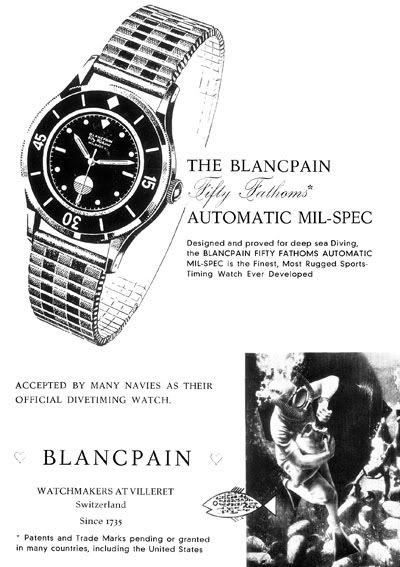
The Fifty Fathoms has a rich and deep history behind it, not unlike that of Panerai. It’s original and first appearance was in 1953 and what follows is a short summery of various articles, websites, two magazines, and a book that referenced the watch. I have found that there are a number of sources one could access in order to research the watch, but they all seemed concerned with one aspect over others. The following is my attempt at bringing it all together in a concise and compact article/review.
As stated, one of the highlights of the Fifty Fathoms is its history, so I will by going back to the origins of its creation.
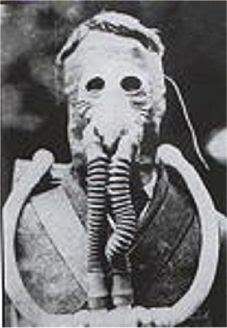

In 1952, The French Ministry of Defense had initiated the creation of an elite combat unit that was later to be named "Les Nageurs de Combat", ( translation: “The Combat Divers” ) and had assigned the task of forming this special task force to two legendary Frenchmen, Captain Robert Maloubier and his lieutenant Claude Riffaud.
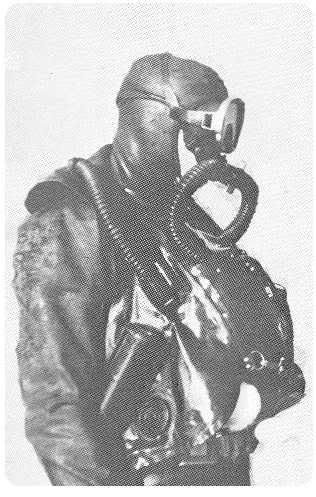
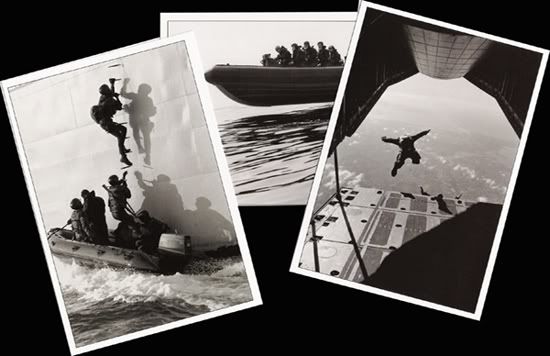
The purpose of this elite unit was to undergo low-profile, high-risk, and sensitive missions with no support of other military units. The process of choosing the appropriate individuals for this team was a long and careful affair, and the caliber of their equipment was also of the very best available.
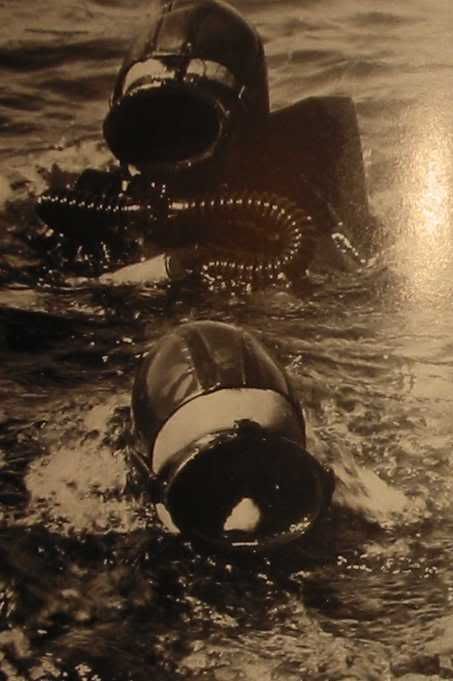
The elite unit went on to serve in the French forces and has had a great deal of success, evolving and spawning off other military special forces. Some of their remarkable equipment where the TSM (TRACTEURS SOUS-MARINS or Underwater Tractors) as can be seen in these pictures:
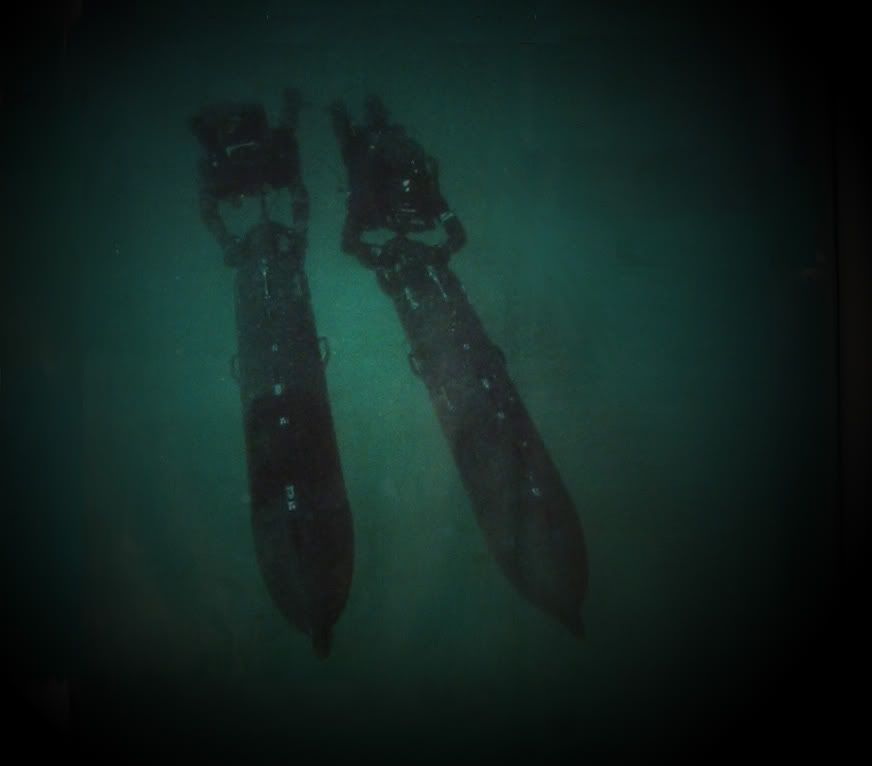

These devices allowed the Combat Divers to move at great speeds underwater undetected and with significantly more equipment than otherwise possible.
Also here you can see the PSM (PROPULSEURS SOUS-MARINS or Underwater Engines)

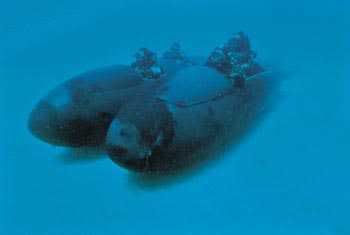

These basically could travel farther and faster than the TSM system but where much more detectable due to their size and noise. Still very effective in their own right.
Captain Robert and his lieutenant attempted to find a wrist watch capable of meeting their stern requirements to serve as the default timing device of the Combat Divers, and repeatedly failed, they eventually approached Blancpain who assigned their top engineers and watchmakers to the task of creating the ultimate diving instrument of the time. Their success is evident today in the legendary status of the Fifty Fathoms AKA the Archetypical Diver’s watch.

One of the most impressive characteristics of the watch back then was the introduction of a URB (Unidirectional Rotating Bezel) that would facilitate calculation of elapsed time; although common today it was a world first at the time of introduction. Blancpain also added an automatic movement for robustness and accuracy.
Additionally the robust stainless steel case guaranteed water resistance to a then unprecedented fifty fathoms (50 fathoms = 50 pitch-stirrers of 1.8 meters = 91 meters) which was the absolute maximum achievable by divers using air tanks filled with a mix of oxygen and nitrogen, this was before COMEX started mixing oxygen and helium and broke that record.
The Fifty Fathoms went on to serve in the French Navy special forces and was deemed such a success that it went on to be issued to the US Navy Seals, German Bundesmarine, and other military special forces.
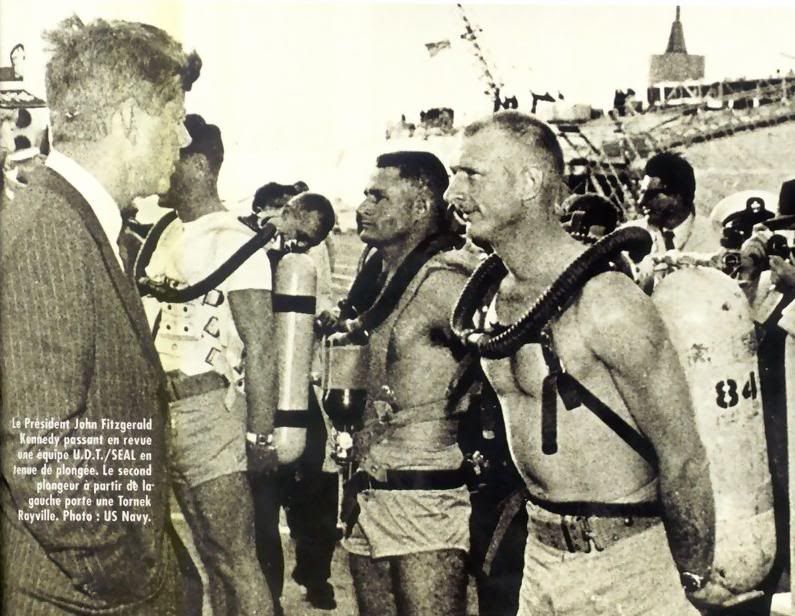
As the Fifty Fathom’s status grew to legendary status marine exploration organizations such as France’s GERS adopted the Fifty Fathoms as well. Notably, the watch could also be seen on the wrists of the crew of the Oscar winning movie The Silent World, similarly to what Agent 007 did to Rolex and Omega and what Sly did to Panerai, the film propelled the Fifty Fathoms to the height of desirability in the civilian market in addition to its military and scientific markets.
Blancpain went on to create various versions of the Fifty Fathoms, most notably the LIP FF for the French market, the US issued and historically important Mil-Spec 1, and others variants with different specifications and case diameters.
Blancpain never totally abandoned the Fifty Fathoms but has never given it as much attention as it deserves in my opinion, concentrating on the other hand on developing its luxury market segment with impeccably decorated watches and highly finished horological masterpieces. That is until the 50th anniversary of the Fifty Fathoms came along, by then the CEO of Blancpain was Marc Hayek, heir to the legendary Nicholas Hayek and an avid sportsman with interest in everything from motor sports to competitive diving. Marc obviously wanted to breathe new life in the almost bankrupt manufacture and had his eyes set of developing the sporting range. Thus in 2003, the Fifty Fathoms was reborn.
The new model embodies the main signature aspects of the original, such as a high water resistancy (relative to the times) the same oversized indices and hands ensuring optimal readability. The design is true to the original as well, with the same black dial and bezel color contrasting against the luminescent indicators. That is not to say the watch has not evolved! On the contrary the new re-edition boasts all the features of a modern high end wrist watch and then some, with not only a sapphire crystal but a cambered sapphire bezel (not a sapphire-covered bezel, a bezel crafted out of sapphire!) for enhanced readability and protection. The visual effect is subtle at first but there is just something breathe taking about it, you have to see it to get its full effect.
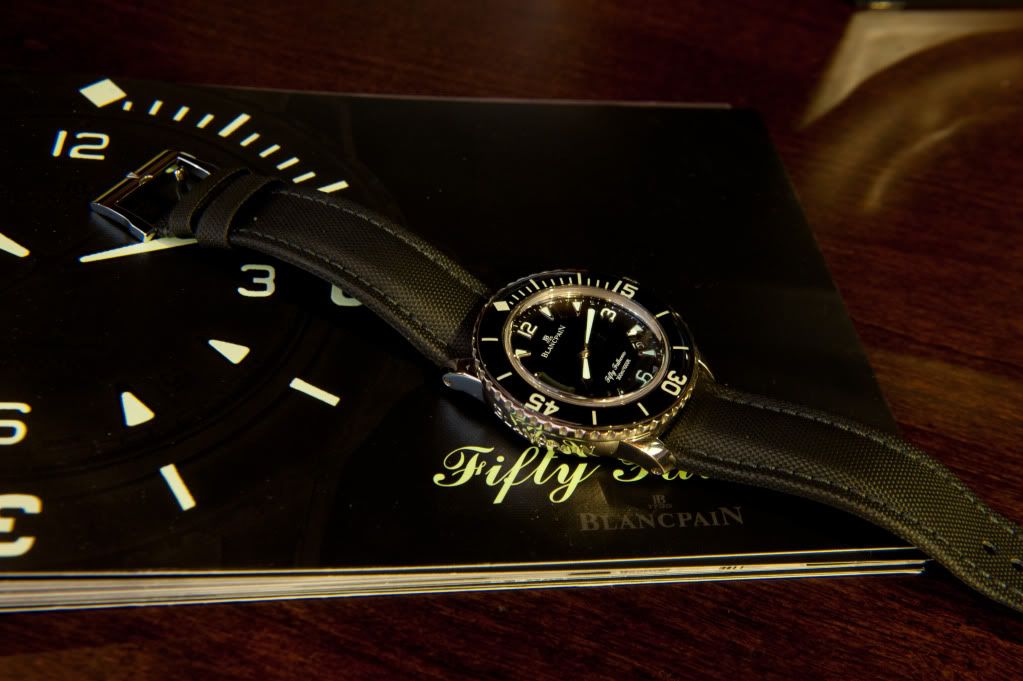
The rotating bezel has always been a key element of the watch; the notched design not only ensures an easy grip but also ads visual interest to the profile of the 45.5mm case. The black date wheel ensures the date vanishes when you are looking at the watch and is only visible when you are looking for it, the vintage styled numerals and thick hands have eye-scorching lume as can be expected of a very good diving watch, the silver highlights contrast beautifully against the subtly textured dial. I particularly enjoy the addition of a red tip to the second’s hand, which infuses the watch with a just enough life against the purposeful yet elegant design.
The finish on the case is superb, and exemplifies the manufacture’s decades of experience. I would have preferred an all brushed finish myself, but still the polished parts look great still.
The movement that comes in the latest edition of the Fifty Fathoms is the in house self-winding beautifully decorated Calibre 1315. Features include an especially dense bimetallic rotor, which facilitates winding efficiency. Also, if you notice from the movement picture below, the absence of a swan-neck regulator is noticeable only by the eagle-eyed, as this caliber utilizes a free-sprung balance regulated by screws around the balance wheel instead (see it now?).


The entire movement is encased in an anti-magnetic cage. Which I have to say I am not a fan of. Although I understand that this is a valuable feature to people who work around magnetic fields, I personally would most likely find myself staring at the gorgeous movement. Same issue I have with the Big Pilot, at least with the BP I have my Big Ingeneur to satisfy my display back fetish.
See those three gold barrels in the middle there? Those are the three series coupled barrels which result in a very respectable 5 day power reserve. All in all allot of innovation and workmanship has went into this movement, and there is nothing to complain about (other than the fact that you can’t see it)
The rubber line canvas strap the watch comes with is absolutely fantastic! Allot of thought and effort went into it and it is a very unique and purposeful thing that manages to look very good, I like that allot! Another high point is that the watch has a fast strap change system built in! Very nice!
the lume is of coarse very very good, even the documentation has luminous treatment!
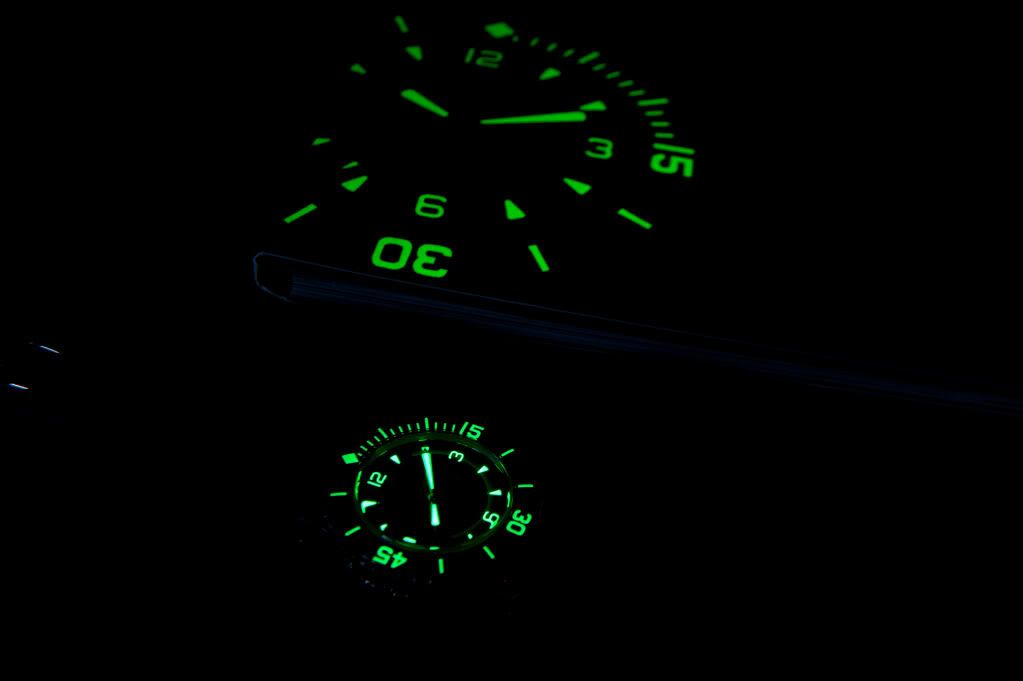
The Fifty Fathoms comes in a water tight plastic and foam case, I have always found it slightly ironic that extreme depth watches tend to come in water tight packaging! Wouldn’t it make more sense to supply the non-water tight watches in that type of packaging? Although I understand that the purpose is to create a sense of functionality to the “tool packaging” and to be fair the watch does come in an inner finely made leather pouch and case, I still prefer the nicely made boxes Panerais, Breitlings etc come in. Then again I find 10 day power reserve automatics odd, so what do I know? J
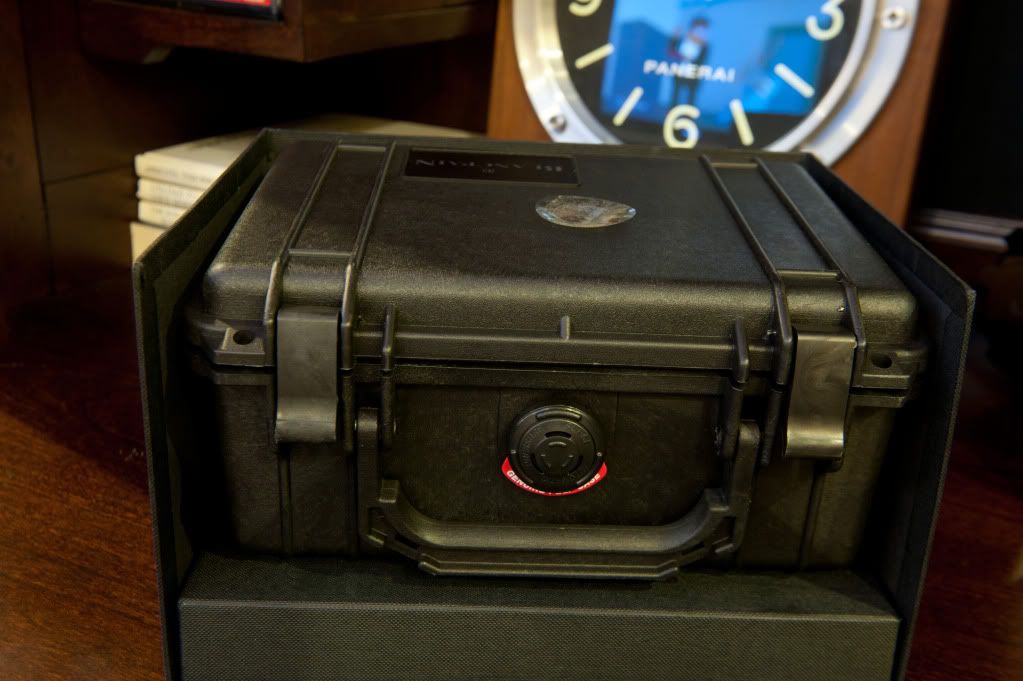
Closer inspection of the box shows that it is made of extreme and high tech materials, a little research shows that it can protect its contents in the harshest and most diverse of environment, not just watery situations. The effort that went into this box looks to be allot more than what Omega did with their water tight boxes and what a regular wood box would have required; maybe my first impression was unfair!
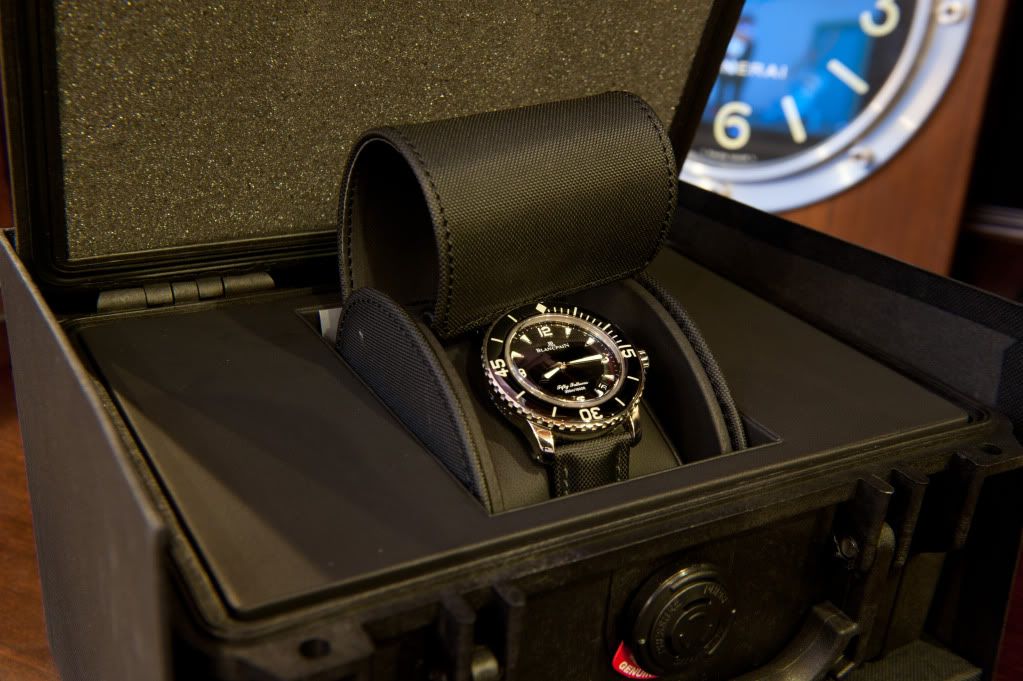
The entire package just comes together to scream of attention to detail and faithfulness to its heritage, every single detail has obviously been agonized over to increase performance and add desirability.
There are a few watches in my humble collection that I believe to be excellent modern interpretations of historically iconic and great watches, the Panerai 233 being a modern watch based on the characteristics of the 1950 with an eye towards the modern consumer, the Ploprof with its ugly-in-an-attractive-way and functional looks true to the original yet with beautiful modern features and a fine finish, the IWC Big Pilot representing a rich history of air war fare yet being produced to the highest standards, the Big Inge with its scientific functionality abandoned for civilian endeavors (the lack of soft iron and the addition of a display back)but roots unforgotten in its design and construction, The DeepSea taking the classic Rolex Sea Dweller design and functionality and throwing both to the extreme with a side of steroids, Blanpain claim that tradition and innovation is not a contradictory term, and that is evident in their approach to the Fifty Fathoms, the watch just fits perfectly in the mix of these re-editions and is a welcome addition to my collection.
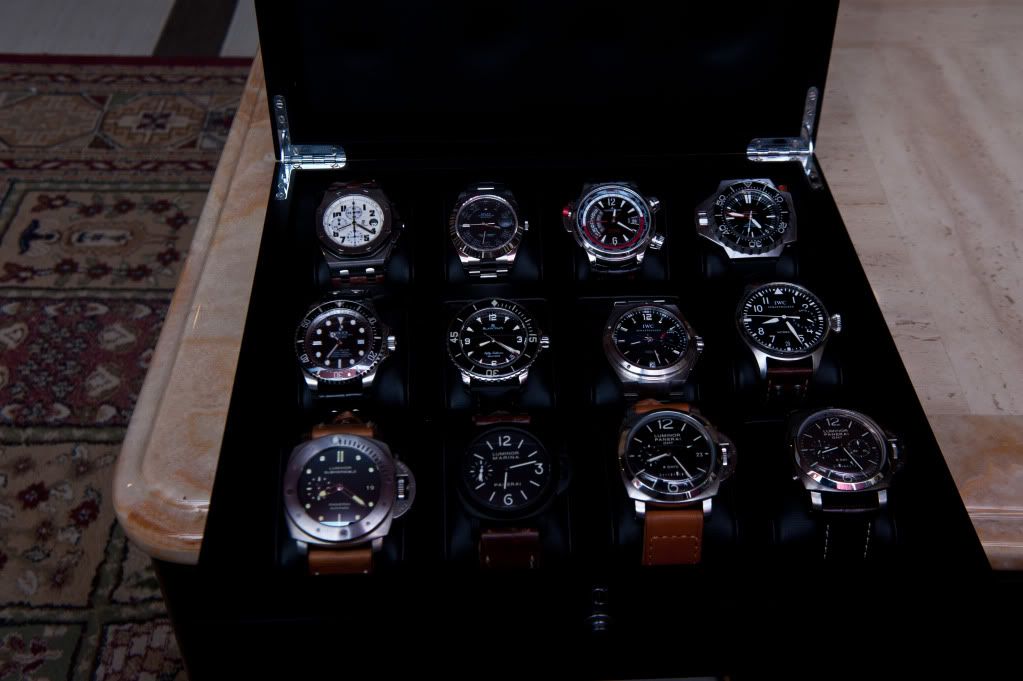

































 thats some collection you have.
thats some collection you have.


